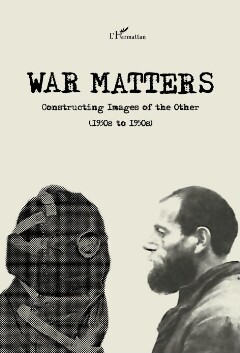Page 58 [58]
56
Dagnostaw Demski
In the words of Mieke Bal: “vision is always implicated in a knot of power and
knowledge, and (...) this contributes to the difficulty of talking about seeing, as the
knowledge which we draw upon to describe sight is constituted in the same acts
of looking that it analyses or critiques” (Bal 2003: 11). Seeing is nothing natural
and, therefore, is closely related to matters of power. As Bal puts it: “it is rooted
in cultural practices and codes as well as in sexuality, desire, and the unconscious;
it is predicated on culturally and historically specific technologies; and it does not
take place in isolation, either from other subjects or from other (non-visual) senses”
(Ibid.: 11).
Iconoclasm has a long history and each different case has had different causes,
goals, contexts and motivations (see Freedberg 2005; Gamboni 1997). For the
purposes of the present study, I define iconoclasm as a struggle against belief in
the power of images attributed to idolaters. Creation and worship of images used
to have a primarily religious character, but during the French Revolution or the
Soviet Revolution it gained political connotations. In the politicised cases, the goal
of iconoclastic gestures was to demolish everything that symbolised the former
order and to establish a new and better one. By narrowing the subject matter to
the issues of otherness it is possible to make a claim that iconoclasm focuses on
removing the symbols important to and valued by the rejected Other. For Bruno
Latour, iconoclasm is an essential part of critique, and as he contends, what has
been broken by the iconoclast is a way of arguing and acting’ that used to render
action and argument possible (1998: 65). And what “horrifies” the local populace
in the iconoclastic move is not the gesture itself that would break their idols, but
their extravagant belief in the idol that the iconoclast wishes to impute to them
(Ibid.: 4). Following this interpretation means that the local natives could not pos¬
sibly bring themselves “to this point of believing that the others would believe in
it. The only one who is projecting feelings onto the idol is the iconoclast himself,
armed with a hammer, not those who should be freed by his gesture from their
shackles” (Ibid.).° Iconophiles were accused of being taken in by the power of the
image, and “now remained ‘liberated’ from its sway. Before being hit, the idol was
something else” (Ibid.).
Following the thought of Dario Gamboni and Lukasz Zaremba, I assume
iconoclasm to be a gesture (exclusively in a metaphorical sense) of overthrowing
the false idols of the mind and the market, which in practice denotes a struggle
7 An accusation levelled at some people accused of being taken in—or worse, of cynically manipulating
credulous believers—by someone who is sure of escaping from this illusion and wants to free others as
well, either from naive belief or from being manipulative (Latour 1998: 65).
§ According to Latour the iconoclast is one who believes in belief, and the (naive) belief might be the
way for the iconoclast to enter into (violent) contact with Others. It is not a state of mind, not a way
to grasp statements, but a mode of relations. It is only when the statue is hit by the violent shock of the
iconoclasts’ hammer that it becomes a potential idol, naively and wrongly endowed with powers that it
does not possess (Latour 1998: 64).

